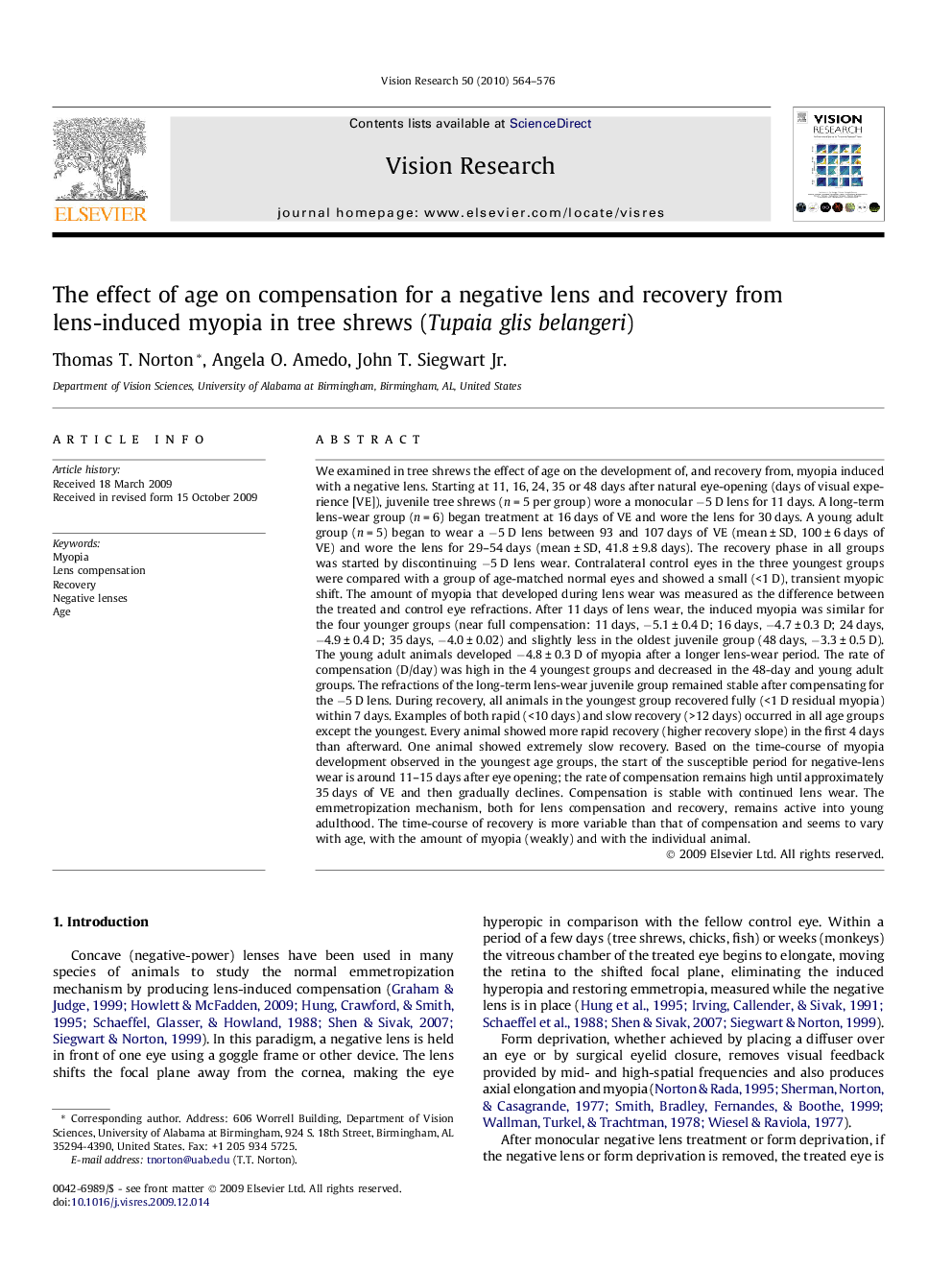| Article ID | Journal | Published Year | Pages | File Type |
|---|---|---|---|---|
| 4034484 | Vision Research | 2010 | 13 Pages |
We examined in tree shrews the effect of age on the development of, and recovery from, myopia induced with a negative lens. Starting at 11, 16, 24, 35 or 48 days after natural eye-opening (days of visual experience [VE]), juvenile tree shrews (n = 5 per group) wore a monocular −5 D lens for 11 days. A long-term lens-wear group (n = 6) began treatment at 16 days of VE and wore the lens for 30 days. A young adult group (n = 5) began to wear a −5 D lens between 93 and 107 days of VE (mean ± SD, 100 ± 6 days of VE) and wore the lens for 29–54 days (mean ± SD, 41.8 ± 9.8 days). The recovery phase in all groups was started by discontinuing −5 D lens wear. Contralateral control eyes in the three youngest groups were compared with a group of age-matched normal eyes and showed a small (<1 D), transient myopic shift. The amount of myopia that developed during lens wear was measured as the difference between the treated and control eye refractions. After 11 days of lens wear, the induced myopia was similar for the four younger groups (near full compensation: 11 days, −5.1 ± 0.4 D; 16 days, −4.7 ± 0.3 D; 24 days, −4.9 ± 0.4 D; 35 days, −4.0 ± 0.02) and slightly less in the oldest juvenile group (48 days, −3.3 ± 0.5 D). The young adult animals developed −4.8 ± 0.3 D of myopia after a longer lens-wear period. The rate of compensation (D/day) was high in the 4 youngest groups and decreased in the 48-day and young adult groups. The refractions of the long-term lens-wear juvenile group remained stable after compensating for the −5 D lens. During recovery, all animals in the youngest group recovered fully (<1 D residual myopia) within 7 days. Examples of both rapid (<10 days) and slow recovery (>12 days) occurred in all age groups except the youngest. Every animal showed more rapid recovery (higher recovery slope) in the first 4 days than afterward. One animal showed extremely slow recovery. Based on the time-course of myopia development observed in the youngest age groups, the start of the susceptible period for negative-lens wear is around 11–15 days after eye opening; the rate of compensation remains high until approximately 35 days of VE and then gradually declines. Compensation is stable with continued lens wear. The emmetropization mechanism, both for lens compensation and recovery, remains active into young adulthood. The time-course of recovery is more variable than that of compensation and seems to vary with age, with the amount of myopia (weakly) and with the individual animal.
